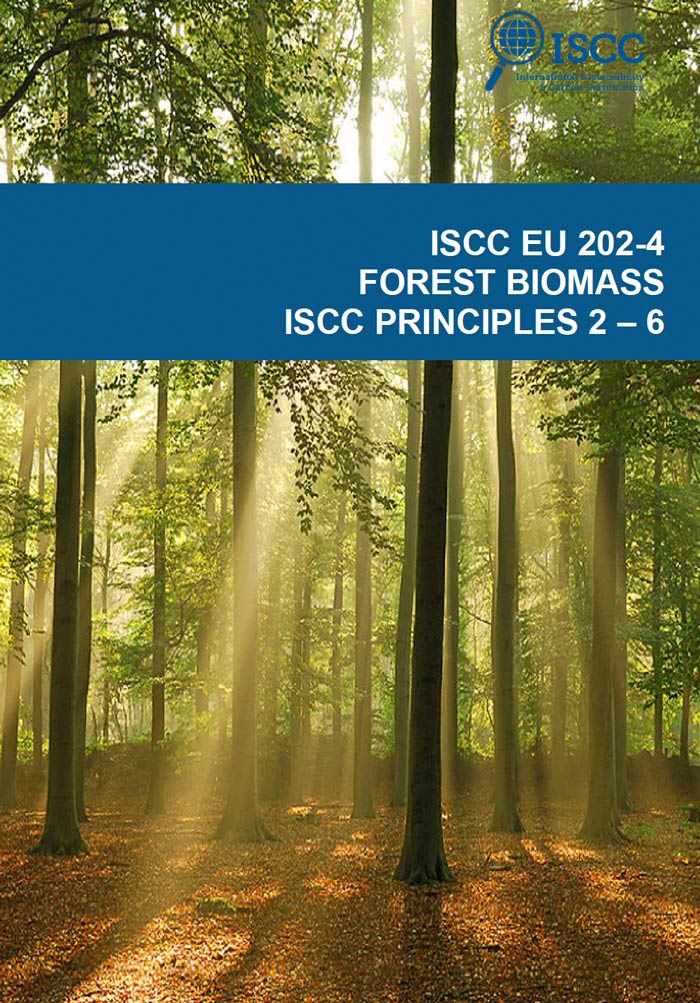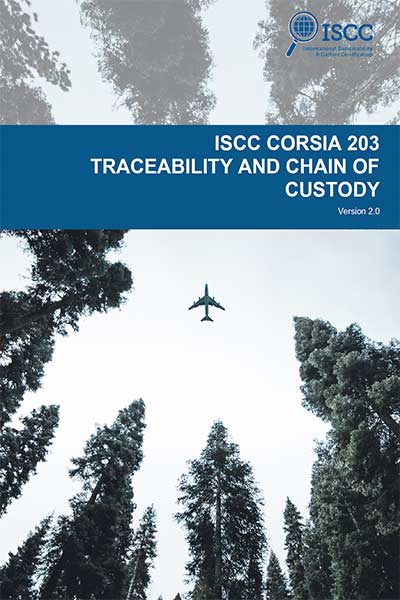
On this page you find the ISCC System Documents and further ISCC Guidance Documents defining the general and technical requirements for each system. Documents on the Add-ons to be applied voluntarily under ISCC are also listed here.
Please note that ISCC communicates updates and adjustments of the ISCC requirements in System Updates until they are incorporated into the ISCC System Documents . Please ensure that you are aware of any adjustments of the ISCC requirements as communicated through the ISCC System Updates.
The following documents constitute the system basics of the ISCC EU certification system applicable as of 01 July 2021. These versions of the documents have been submitted to the European Commission in the framework of the recognition process of ISCC EU under the RED II. Please also note that the documents may be subject to change depending on further legislation and further requirements of the European Commission. At the beginning of each document, you find a comprehensive summary of changes compared to the previous version.

This document lays down the general principles according to which the ISCC is governed globally. It specifies the goal and internal structure of ISCC, as well as the relationship between ISCC and its stakeholders.

This document lays down the requirements for Certification Bodies to become recognised by ISCC, and the duties of ISCC-recognised CBs performing certification services for ISCC. Furthermore, this document lays down the requirements for and necessary qualifications of auditors conducting ISCC audits.

The basics of the ISCC system are explained in this document, including the scope, the working procedures of ISCC and the certification process.

Biomass used in food, feed, chemical and energy markets should be produced in a sustainable way. This document then explains how the production of biomass should follow best environmental, social and economic practices.

ISCC Principles 2-6 contribute to the sustainable
cultivation of biomass and their products to support the reduction of environmental impacts, more efficient resource use and an increasing capacity for climate change adaptation and mitigation as well as climate resilience.

This document provides the definitions, legal framework and verification process for verifying if materials meet the definition for waste and residues.

The requirements described in this document apply to all elements of the supply chain of sustainable materials that have to be covered by certification (farms or plantations, point of origins of wastes and residues, first gathering points, central offices, collecting points for waste and residues, processing units, and traders and storage facilities).

The scope of this document covers the requirements on how the risk management process under ISCC is applied to all activities of ISCC and the implications of risks for ISCC audits.

The purpose of the document “Greenhouse Gas Emissions” is to explain the options for stating greenhouse gas (GHG) emission values along the supply chain and to provide the methodology, rules and guidelines for calculating and verifying GHG emissions and emission reductions.
Please note that the ISCC EU System Documents also serve as system documents for the ISCC PLUS scheme. The few differences and requirements that are specific to ISCC PLUS are described in the ISCC PLUS System Document, which is an additional compulsory source of information to the ISCC EU System Documents for a certification under ISCC PLUS.

This document presents the ISCC PLUS certification system, including governance, system basics and the certification scopes.

The document applies to all kinds of forest biomass which shall be supplied as sustainable under ISCC. These Principles can be already used under ISCC PLUS to demonstrate sustainable forest management.
The following documents constitute the system basics of the ISCC CORSIA certification system applicable as of 01 January 2024. These versions of the documents have been submitted to ICAO in the framework of the recognition process of ISCC CORSIA under the ICAO CORSIA scheme. Please also note that the documents may be subject to change depending on the continuous development of CORSIA by ICAO. At the beginning of each system document, you will find a comprehensive summary of changes compared to the previous version.

ISCC CORSIA System Document 102: principles according to which the ISCC systems are governed globally. It specifies the goals and internal structure of ISCC, as well as the relationship between ISCC and its stakeholders.

The document specifies the requirements for certification bodies to become recognised by ISCC and requirements and necessary qualifications of auditors conducting ISCC CORSIA audits.

Describing the ISCC CORSIA Certification System, the document outlines the certification criteria (sustainability requirements, traceability and life cycle emissions), relevant participants in the certification system and the registration and certification procedure.

The document provides the principles for the certification of raw materials and feedstocks qualifying as waste, residues and by-products, their supply chains and specific certification requirements that may differ from crop-based biomass.

The document explains the sustainability requirements that are valid for farms or plantations.

This document describes the requirements for traceability and chain of custody applicable to all elements of an ISCC CORSIA supply chain handling sustainable material.

This document lays down how to conduct audits under ISCC CORSIA, including adjusting audit intensity in accordance with the risk management process.

The intention of the document “Life Cycle Emissions” is to provide the methodology, rules and guidelines for calculating, reporting and verifying emissions reductions. The methodology described here is based on the ICAO Document “CORSIA Methodology for Calculating Actual Life Cycle Emissions Values” (2022). It further lays down the basic requirements for low LUC risk certification under ISCC CORSIA.

This document specifies requirements for the certification of groups, including the principles for sampling.

Building on the requirements for low LUC risk certification under CORSIA laid down in ISCC CORSIA System document 205 (please see above), this guidance document provides additional guidance on eligible low LUC risk practices, their verification as well as on the general low LUC risk certification.
The scheme ISCC Japan FIT is recognized by Japan’s Ministry of Economy, Trade and Industry (METI) for the procurement of eligible biomass for the energy production under the Feed-in-Tariff (FIT) system in Japan. Products certified under this ISCC standard are eligible under Japan’s FIT system.

This document lays down the framework and requirements for the ISCC Japan FIT scheme. The version 2.0 of this System Document includes the latest updates to Japan’s FIT system, which have been integrated in the dedicated ISCC scheme as approved by METI. The document covers the scope and certification requirements as well as additional criteria for the eligible materials, and the applicable Principles and Criteria.
The following documents shall provide further guidance for the certification of particular materials or processes. The guidance documents supplement the ISCC System Documents. ISCC may adjust these guidance documents, especially to incorporate adjusted regulative requirements.

Guidance document for Low ILUC Risk Feedstock

Guidance document for the audit of waste and residues from palm oil mills

Guidance document for the audit of wastewater from ship transport

Guidance document for the audit of algae cultivation for the production of biofuels

Guidance document for the certification of independent smallholders

Guidance document for the simultaneous co-processing of sustainable bio and fossil feedstocks